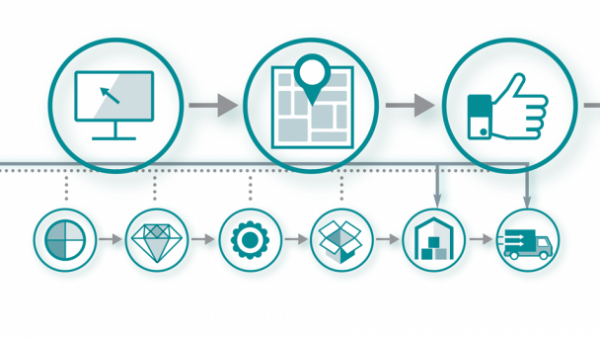The Importance of Optimising Workflows for Print Automation
Printing, just like almost every industry, is advancing in line with technology, customer expectations and big data.
Gone are the days where it was just purely a matter of putting ink on paper – it’s now altogether more sophisticated and includes data handling, finishing and logistics. Those who come out on top going forward will be the ones who do ‘everything else’ with greatest efficiency, thanks to print automation.
Providing the desired output is assumed by customers – it’s about making it easy for them, speeding up the service and adding value in other ways.
So, how is this achieved? Technology, as you might expect, is key.
However, it starts with seeing the entire production chain as a whole. Holistic models such as Industry 4.0, in which all relevant processes and components are digitised, promises benefits such as improved productivity and efficiency as well as better customer experience.
What benefits do Industry 4.0 and print automation hold?
As per Industry 4.0, large-scale machine-to-machine communication (M2M) and the internet of things (IoT) are integrated for increased automation, improved communication and self-monitoring, and production of smart machines that can analyse and diagnose issues without the need for human intervention.
Following such an approach leads to the natural progression of thought from processing individual production steps to having systems which connect, coordinate and optimise these workflows into a fluid and continuous industrial process.
It is, of course, no small task. There is not only one workflow; there are many variations in workflows that have to be digitised and coordinated today. However, shorter runs (leading to more frequent job changes), ever-tighter time frames and shorter delivery times are demanding that print shops begin to do things more efficiently than ever. Optimisation and automation are the only ways of realising these marginal – but potentially significant – gains and to see off the competition.
Optimisation and automation stand to deliver faster turnaround times and lower costs
Move first for the biggest wins
Optimisation and automation stand to deliver faster turnaround times and lower costs. But, according to InfoTrends, only about 13% of print service providers (PSPs) have fully or mostly automated workflows. Why is the number so low? The truth is likely to be around its perceived complexity. Most PSPs are still coming to terms with models like Industry 4.0 – which leaves an obvious opportunity for those who move first, with workflow becoming the core differentiator between competitive print providers, taking over from skill and quality.
From order management through to measuring the end results, each step can be digitised and coordinated thanks to IoT. This can free up capacity and give you the opportunity to take on new jobs and offer new services to existing customers.
While the goal is to make a series of processes a seamless industrial process, that’s not to say that you shouldn’t take things in a step-by-step process. You can start with the low hanging fruit and get the easy-to-address issues, then grow from there. Don’t try to solve everything all at once.
Read here our 3 articles about the print automation process



